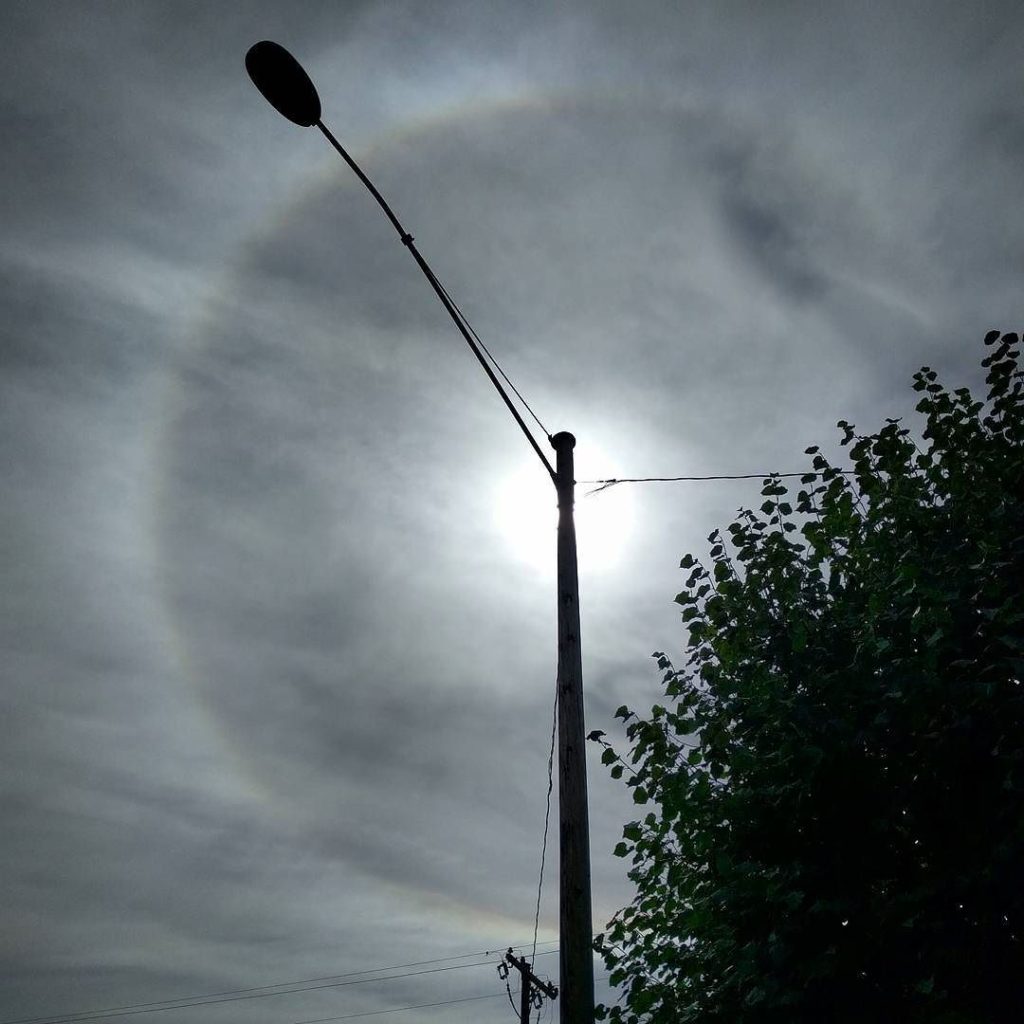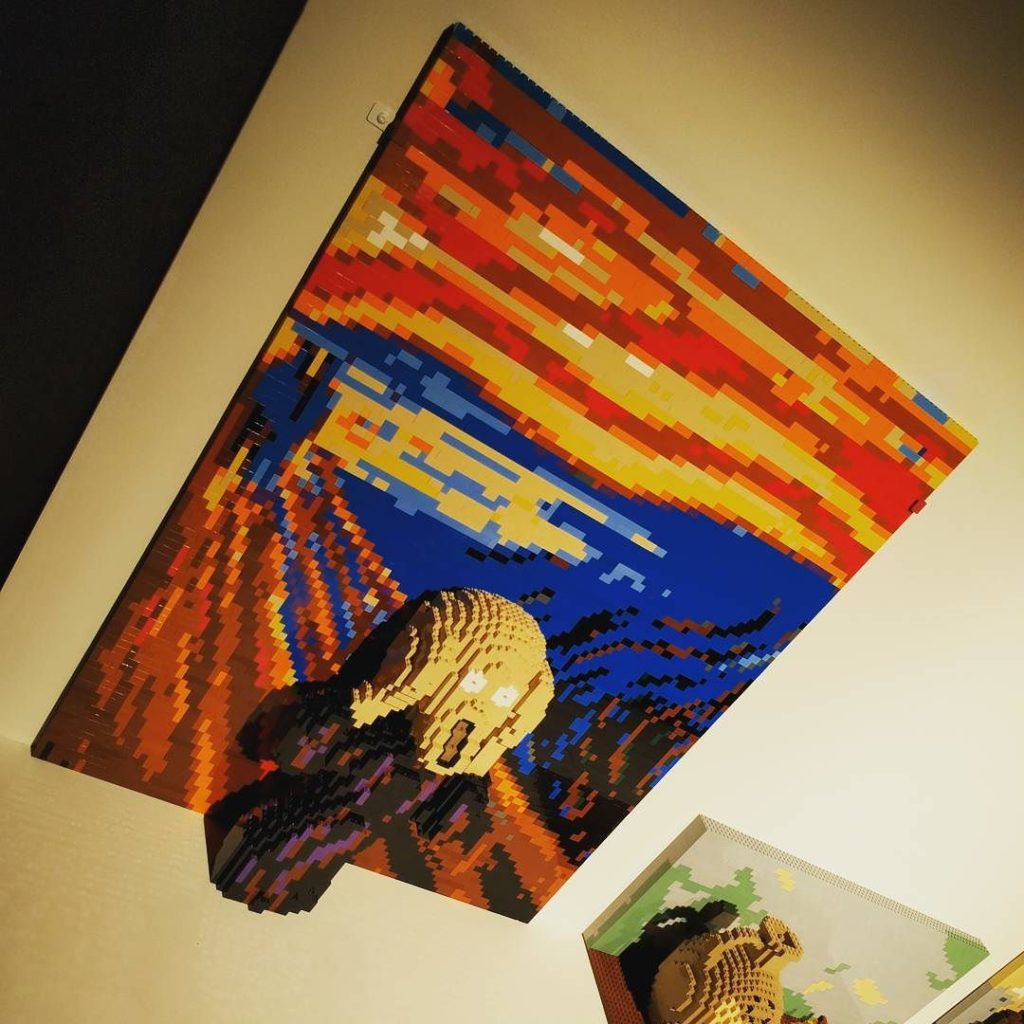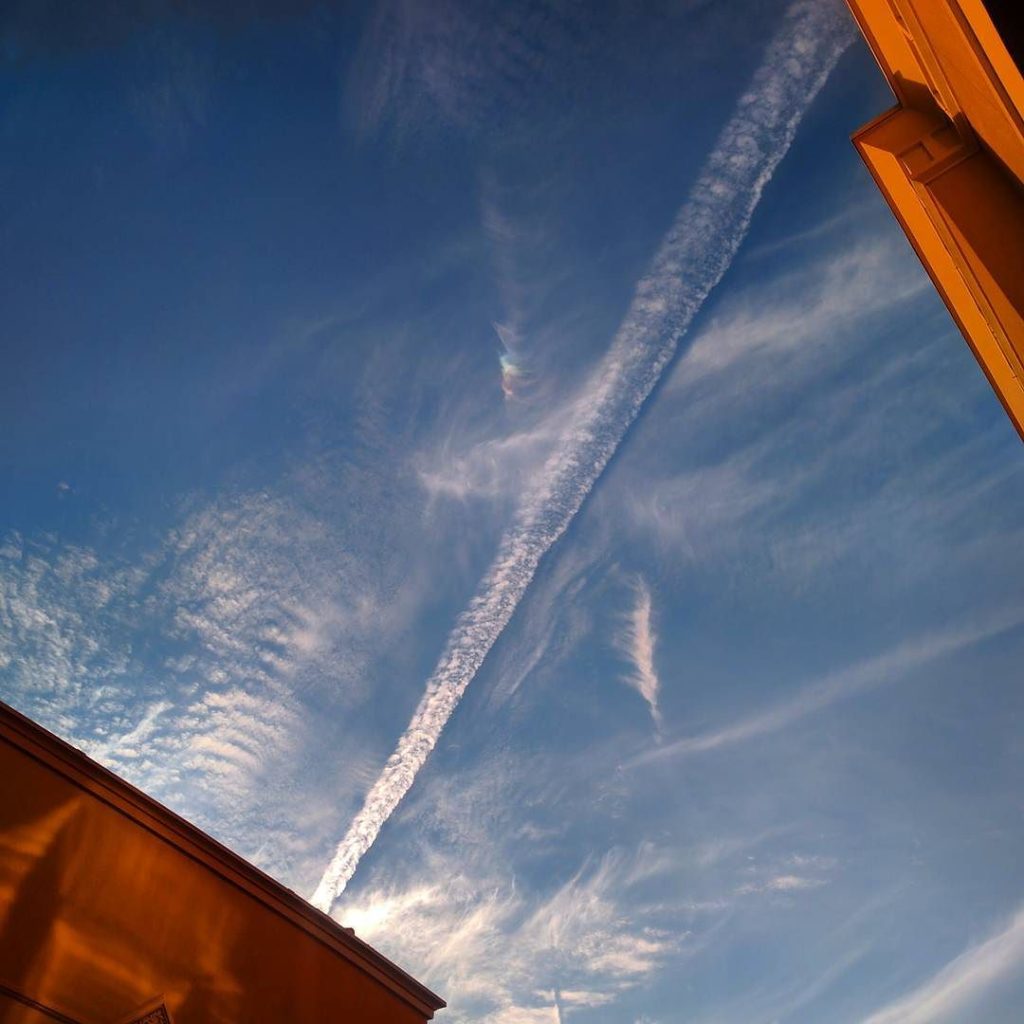
Sun halo, the day before the solar eclipse. Seems like good timing.

Sun halo, the day before the solar eclipse. Seems like good timing.
Google Photos has been sending me its usual “Rediscover this day!” collages from Comic-Con 2013. On Tuesday it sent me a collage built from July 18, and on Thursday it sent me a collage built from July 20, marking Thursday and Saturday of the event.
Wait, what about Friday?
Well, here’s the interesting thing: Friday was the day I spent the afternoon in the emergency room.
I’d like to think someone programmed the algorithm to skip photos tagged for hospitals. Imagine if it was my wife’s photo collection, and I hadn’t made it — “Rediscover this day” would have been rather cruel in that case.
The more likely explanation is that I don’t have very many photos from that day for it to pick from, at least not on the account. On my computer I have 19 photos from my phone, 19 from my camera, and 5 from Katie’s phone. Of those, I picked 21 for my Flickr album. In Google Photos, I only have six from that day, all from my phone — and they don’t include the ER wristband shot.
My best guess is that I cleared most of them from my phone sometime before I started using the cloud backup feature… but I can’t figure out why I would have kept the photos that are there, and not some of the photos that aren’t.
Here are the photos that are on there:
It’s an odd collection, isn’t it? The three individual frames from the GoT protester collage are in there, so maybe the collage app saved extra copies of the sources, and Photos found the folder. I can see deliberately keeping the view of the blimp from the convention floor (literally the floor), but if I’d done that, I don’t know why I wouldn’t have saved the wristband shot as well. And why save the Duplo Enterprise, but not the photos of my son playing at the LEGO booth?
Phone cameras and cloud storage are supposed to augment our memory. But sometimes the context is just missing.
The kiddo had a day off from school in mid-March, so I took a vacation day and we all drove out to the desert to see the spring wildflowers. After the endless suburbia of Los Angeles, northern Orange County, and Corona, we drove past hills green from the winter rains, then into the similarly-endless suburbs of Temecula. It’s been years since I took Highway 79 south, and the city has grown a lot, but after a few miles the strip malls and housing developments disappeared, the road shrank to two lanes, and we drove through green hills with oaks, bushes, and the occasional patches of poppies, mustard and lupins. Fences, dirt roads and gates indicated ranches and wineries. Continue reading

😱 Artist Nathan Sawaya recreates Edvard Munch’s The Scream in LEGO, on exhibit in The Art of the Brick.
Perhaps it’s a cliche, but I’ve rather liked The Scream since I first saw a print of it somewhere. (Well, one version of it, anyway, as the artist created four of them.) Maybe it was in an art book, maybe it was a poster. Maybe it was one of a zillion pop culture references to it. (Heck, it’s got its own emoji now.) I associate it with college, but I also associate it with the crowd I hung out with in high school, so it’s hard to say.
And of course growing up in the 1980s means I have a lot of fond memories of playing with LEGO.
I got to see the full exhibit at the Fleet Science Center last week. (It’s there through the end of January). The first two rooms are mostly recreations of famous paintings and sculptures — Starry Night, the Mona Lisa, Venus de Milo, and so on — and the rest are original works. Some are realistic, while others are outright surreal. Almost all of them are done using standard rectangular LEGO bricks and tiles.
Sadly, the 6YO was not impressed by the subject matter, the creativity, or the craftsmanship (he was much more interested in building in the play area afterward), and tried to leave several times before we got through the whole exhibit. Then we got to the the dinosaur skeleton. That one he liked, as well as the crowd walking along a street that, when viewed from the right angle, lines up with the markings on the wall to form the image of an eye.

The colored wisp of cloud is too high in the sky to be a rainbow or a circumhorizon arc, and the spectrum is too ordered to be an iridescent cloud. I looked up ice halos that might produce this effect near vertical just before sunset. It turns out a circumzenithal arc is a perfect match: a rainbow arc near the zenith, brightest when the sun is very low. I’d never seen one before – it’s always cool to spot a new kind of sun halo.
Spotted November 12 at the Irvine Spectrum shopping center. It was around 90°F during the day at ground level, but of course it can be a lot colder in the upper atmosphere.
Saturation increased to show the colors more clearly.
For Halloween, enjoy this spooky tree at Madrona Marsh.

Our neighborhood saw a lot more trick-or-treaters tonight than we have in years. By 8:00 kids were walking back to the sidewalk from our door shouting to their friends, “Hey, they still have candy!” It was pure chance that I bought extra this afternoon, and I’m glad I did.